Anand took four colourless solutions P, Q, R and S, and performed the following tests. What is the definite conclusion that Anand can reach?
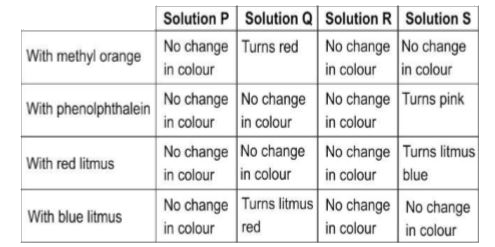
Both P and S are salt solutions.
Both Q and S are basic solutions.
Both Q and R are salt solutions.
Both P and R are neutral solutions
The correct Answer is:D
Step by step video, text & image solution for Anand took four colourless solutions P, Q, R and S, and performed the following tests. What is the definite conclusion that Anand can reach? by Physics experts to help you in doubts & scoring excellent marks in Class 10 exams.
Updated on:21/07/2023Topper's Solved these Questions
- PRACTICE PAPER 2022BOOK - CBSE MODEL PAPERCHAPTER - PRACTICE PAPER 2022EXERCISE - Multiple Choice Questions
60 Videos
- CASE STUDY QUESTIONS CLASS 10TH EXAM 2020-21BOOK - CBSE MODEL PAPERCHAPTER - CASE STUDY QUESTIONS CLASS 10TH EXAM 2020-21EXERCISE - MCQs
239 Videos
- QUESTION BANK 2021BOOK - CBSE MODEL PAPERCHAPTER - QUESTION BANK 2021EXERCISE - QUESTIONS
60 Videos
Similar Questions
On adding a few drops of universal indicator to three unknown colourless solutions (P), (Q) and (R ) taken separately in three test tubes shown in the following diagrams, a student observed the changes in colour as green in (P ), red in (Q) and violet in (R ). What will be the decreasing order of pH ?
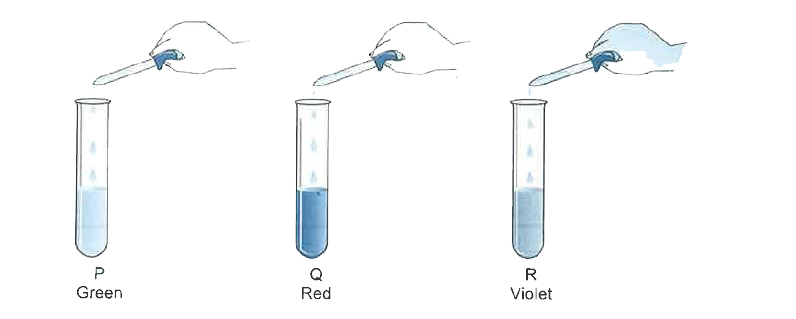
View SolutionA food sample was tested for the presence of components P, Q, R and S and the following chromatogram was obtained.
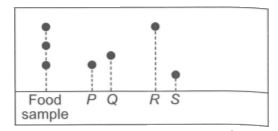
The components not present in food sample are
View Solution
Knowledge Check
On adding a few drops of universal indicator solution to three unknown colourless solutions P,Q, and R taken separately in three test-tubes shown in the diagrams, a student observed the changes in colour as green in solution P red in solution Q and violet in solution R.
The decreasing order of the pH of the three solutions is:
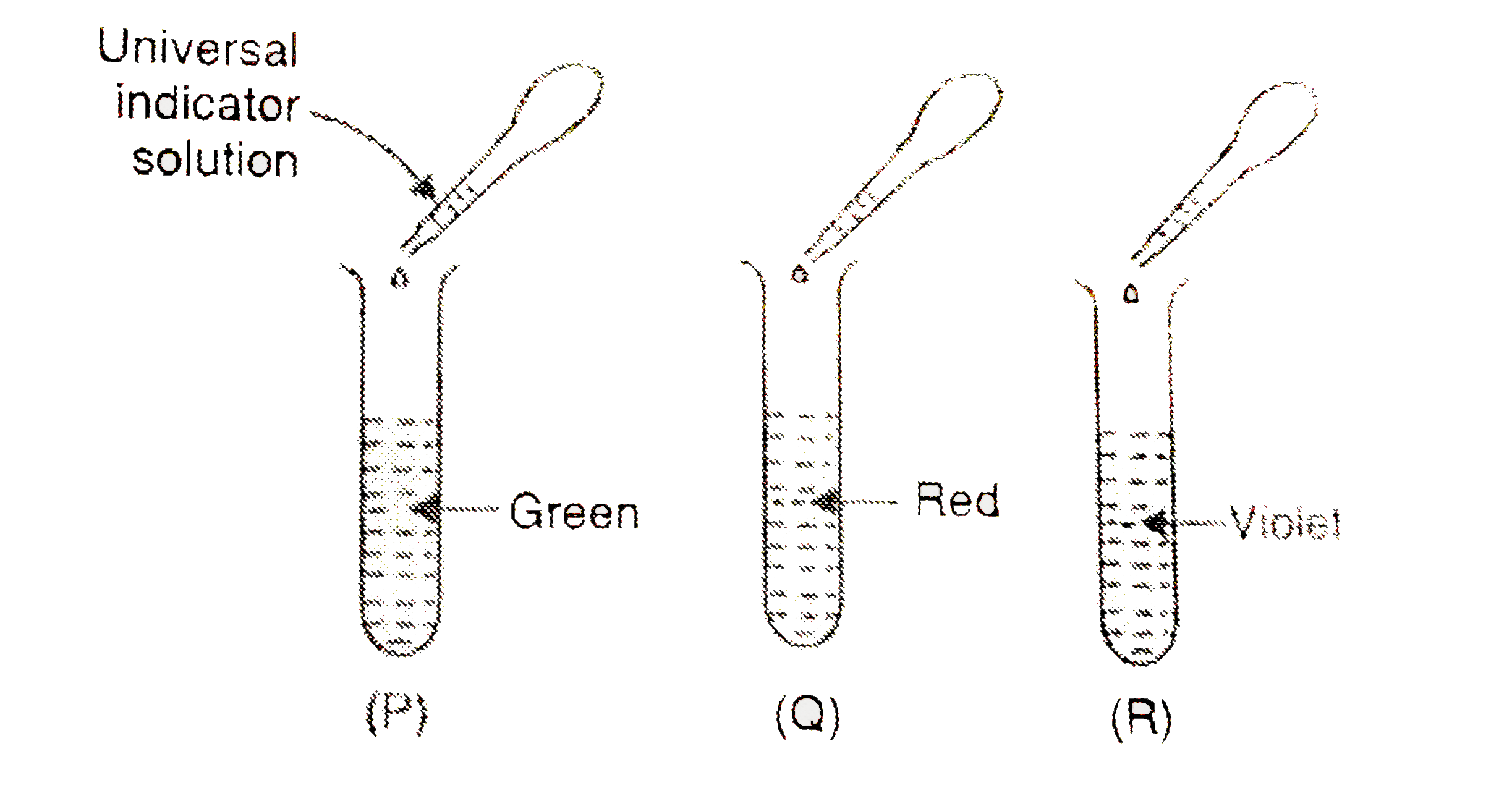 AP>Q>RBR>P>QCQ>P>RDR>Q>P
AP>Q>RBR>P>QCQ>P>RDR>Q>PThe table probides the pH value of four solutions P, Q, R and s
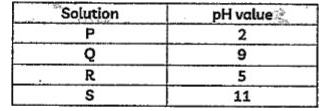
Which of the following correctly represents the solutions in increasing order of their hydronium ion concentration ?AP>Q>R>SBP>S>Q>RCS>Q>R>PDS>P>Q>RP@Q means P is less than Q.
P@Q means P is greater than Q.
P@Q means P is greater than or equal to Q.
P=Q means P is equal to Q.
P@Q means P is either smaller than or equal to Q.
Now in each of the following questions, assuming the given statements to be true, find which of the two conclusions I and II given blow them is/are definitely true? Give answer.
Statements: K@T, S=K,T (c)R
Conclusions I. S@R
II. T=RAif only conclusion I is true.Bif only Conclusion II is true.Cif either I or II is true.Dif neither I nor II is true, and
If P(p), Q(q), R(r) and S(s) be four points such that 3p+8q=6r+5s then the lines PQ and RS are
View SolutionThe following four colourless salt solutions are placed in separate test tubes and a strip of Cu is placed in each. Which solution os aluminium nitrate ?
View Solution'P$Q' means 'P is either smaller than nor greaterthan Q'.
'PδQ' means 'P is not smaller than Q'.
'P© Q' means 'P is either smaller or equal to Q'.
'P⋆Q' means 'P is smaller than Q'.
'P@Q' means 'P is neither equal to nor smaller Q'.
Now in each of the following questions assuming the given statements to be true,find which of the two conclusions I and II given below them is/are definitely true?
Statements: W$F,FδR,R⋆M
Conclusions: I.R⋆W
II.R$W
View Solution'P$Q' means 'P is either smaller than nor greaterthan Q'.
'PδQ' means 'P is not smaller than Q'.
'P© Q' means 'P is either smaller or equal to Q'.
'P⋆Q' means 'P is smaller than Q'.
'P@Q' means 'P is neither equal to nor smaller Q'.
Now in each of the following questions assuming the given statements to be true,find which of the two conclusions I and II given below them is/are definitely true?
Statements: K (c) R, RδM,M⋆F
Conclusions: I. N@J
II. K⋆M
View Solution'P$Q' means 'P is either smaller than nor greaterthan Q'. 'PδQ' means 'P is not smaller than Q'. 'P© Q' means 'P is either smaller or equal to Q'. 'P⋆Q' means 'P is smaller than Q'. 'P@Q' means 'P is neither equal to nor smaller Q'. Now in each of the following questions assuming the given statements to be true,find which of the two conclusions I and II given below them is/are definitely true? Statements: VδF,FδR,R⋆M Conclusions: I.V@RII. VδR
View Solution
